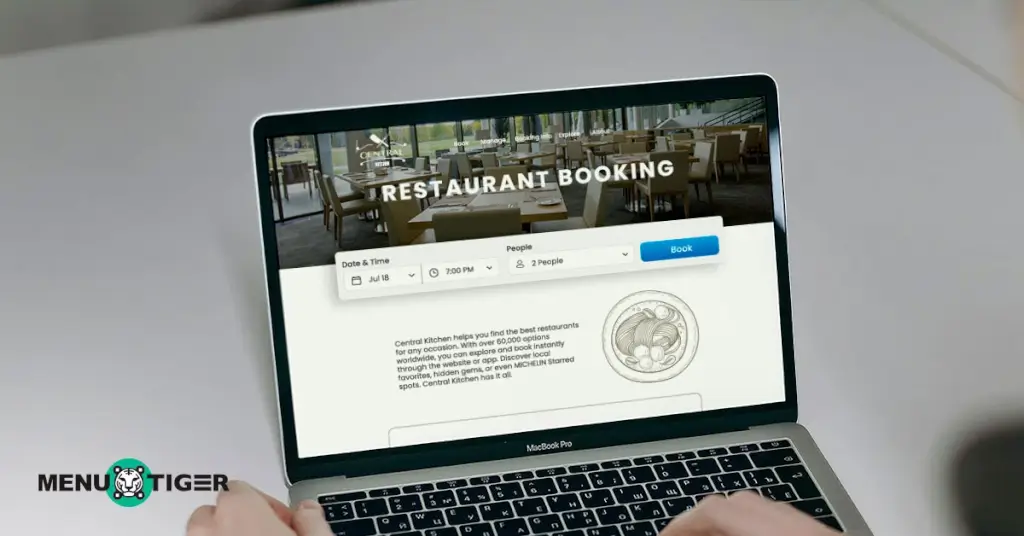
How to Improve Your Restaurant Reservation System
Last Updated: August 19, 2025
Let me guess: you have a restaurant reservation system in place, but it feels like it’s only doing the basics, while competitors seem to be getting more out of theirs.
The fact that you're looking to improve puts you on the right path. A smart reservation system should do more than track bookings. It should support restaurant order management, forecast traffic, boost repeat visits, and streamline staff scheduling.
This might be something you haven’t explored yet, and that’s okay. This article will show you how to unlock the full potential of your reservation system. It’s time to turn it into a strategic asset, not just a booking tool.
What is a restaurant reservation system?
A restaurant reservation system is a digital tool that allows customers to book tables in advance, whether through a restaurant website reservation feature, an app, or a third-party platform.
This helps you avoid those hectic moments when a lot of people walk in at the same time without a reservation. That’s when the line gets long, the entrance gets packed, and the staff starts scrambling to figure out where to seat everyone.
With an efficient reservation system, things feel more in control. You know who's coming, when they’re coming, and where to seat them. It just makes everything run a lot smoother, for both the team and the guests.
Which reservation system works best for your restaurant?
Below are the most popular reservation platforms today, and what type of restaurant each one is best suited for:
1. OpenTable
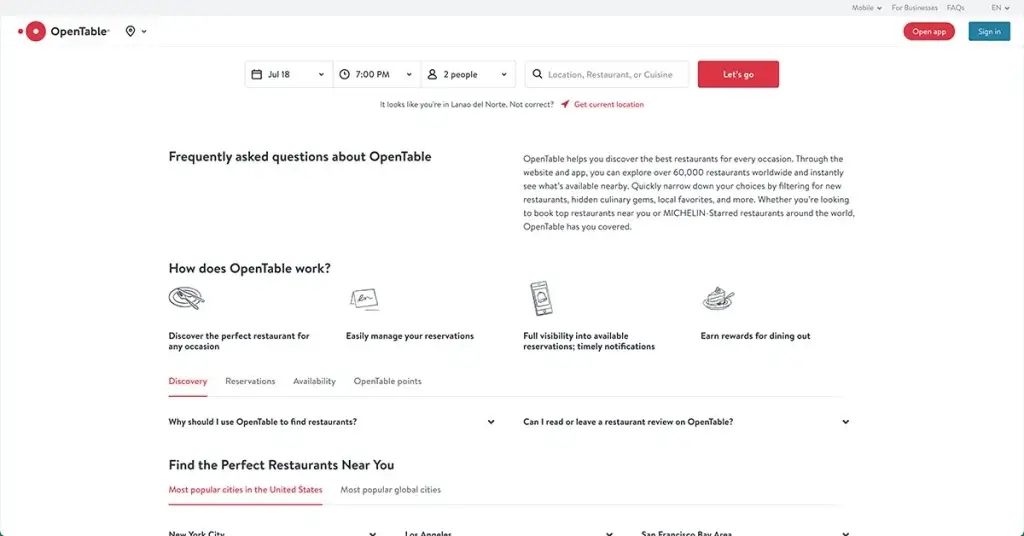
If you have a fancy or high-traffic restaurant, OpenTable is one of the biggest reservation systems out there. What makes it stand out is its huge diner network.
People browse OpenTable to find places to eat, so it’s also a marketing tool, and it can help bring in new customers.
2. Resy
Resy works well for modern restaurants that want to elevate the guest experience. It’s best for mid to high-end places that want control over reservations without the per-cover fees.
What makes it unique is its real-time waitlist and seating tools, along with personalized guest profiles that help staff remember regulars and their preferences.
3. Tock
Tock is a great fit for restaurants that offer prepaid experiences like tasting menus, wine dinners, or private events. It’s best for creative concepts and event-focused dining.
This system lets you collect prepayments or deposits at the time of booking, which reduces no-shows and gives you more control over cash flow.
4. Eat App
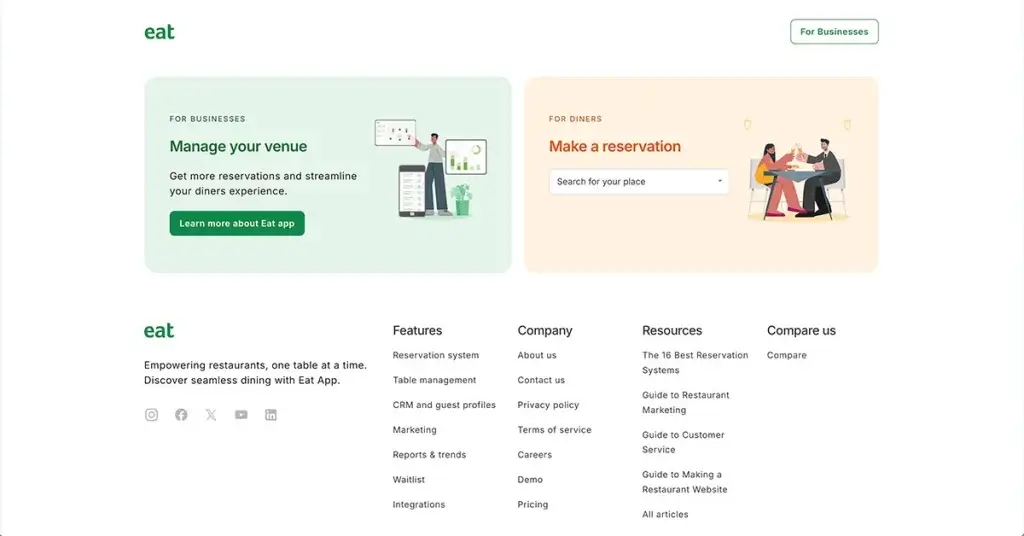
Eat App is great for neighborhood restaurants or cafes that want powerful reservation features without breaking the bank. It’s clean, intuitive, and helps you keep track of guest history and preferences.
The built-in Customer Relationship Management (CRM) lets you see who your regulars are, connect with your POS system, and understand which tables or times perform best, all from one simple dashboard.
5. Zenchef
Zenchef is ideal for independent restaurants that want full control over their reservations and customer data without relying on third-party marketplaces. It’s best for restaurants that care about branding and direct customer relationships.
What makes it stand out is that it lets you manage bookings directly from your website, under your name, with no per-cover fees.
You keep 100% of the guest data, and the system includes tools for email marketing, review management, and website integration, all under one platform.
6. TableIn
If you run a small to mid-sized place and want a no-frills system that just works, TableIn is worth checking out. It’s affordable, user-friendly, and designed for simplicity.
One cool thing is you can take bookings straight from your website or social media, and manage them from a clean, straightforward dashboard.
7. Quandoo
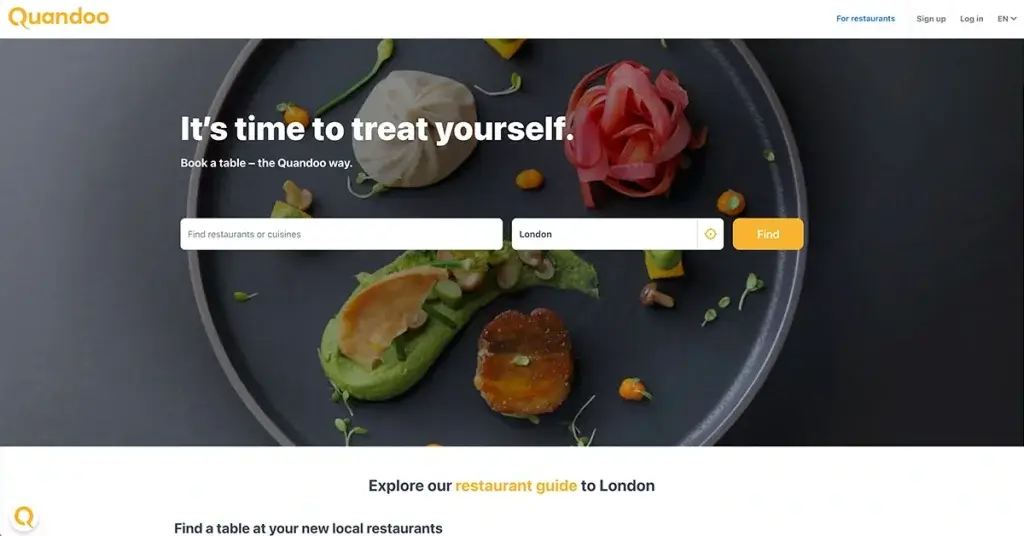
Quandoo is a strong option for restaurants in Europe or Asia that want multilingual and multi-location support. It’s best if you serve a diverse crowd or run multiple branches.
It’s designed to help you localize your booking experience. Guests can reserve in their language, and you can tailor availability for each branch.
8. GloriaFood
If you’re a smaller restaurant, food stall, or starting with a tight budget, GloriaFood offers free tools for reservations and online orders. It’s simple, mobile-friendly, and doesn’t require any fancy tech.
One cool thing is you can add the reservation widget directly to your Facebook page or website, which is super handy if you don’t have a big online presence yet.
9. Wisely
Wisely combines reservations with waitlist management, marketing automation, and powerful analytics. It’s ideal for restaurants focused on personalization and retention.
It also helps you turn one-time visitors into loyal regulars by using data to personalize service and drive repeat bookings.
10. TheFork
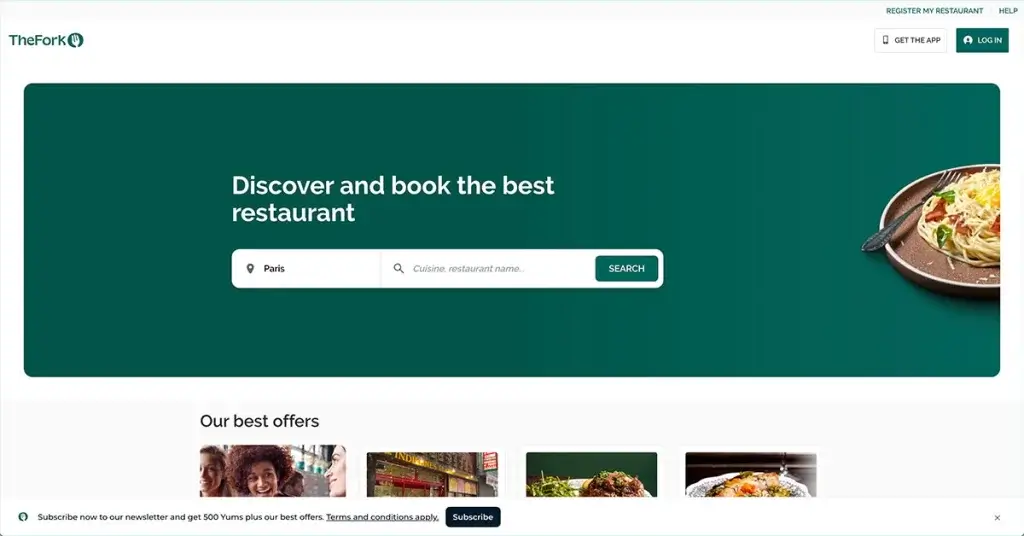
TheFork is great for restaurants in European tourist spots. Since it’s tied to TripAdvisor, travelers can read reviews and book a table right away, which means more exposure without extra effort.
It also gives you tools for handling bookings, managing reviews, and running special promos to fill seats during slow hours.

Key features you should look for in a reservation system
When evaluating platforms, it's important to focus on features that align with your restaurant's workflow, guest expectations, business goals, and restaurant order system in place.
Here are the key features to prioritize in a restaurant online reservation system:
1. Real-time availability and smart table allocation
Look for smart seat mapping that auto-adjusts bookings based on party size and average meal duration to avoid gaps and lost revenue.
2. Guest profiles and visit history
This is important since it lets you personalize greetings or upsell more effectively (“Would you like the same wine you ordered last time?”).
3. Two-way SMS and WhatsApp communication
A simple text confirmation isn’t enough. Two-way messaging lets guests reply to confirm, cancel, or even make special requests without calling.
For restaurants looking to enhance messaging capabilities, platforms like Messente provide reliable SMS solutions that integrate seamlessly with reservation systems
4. Integrates digital menu ordering systems
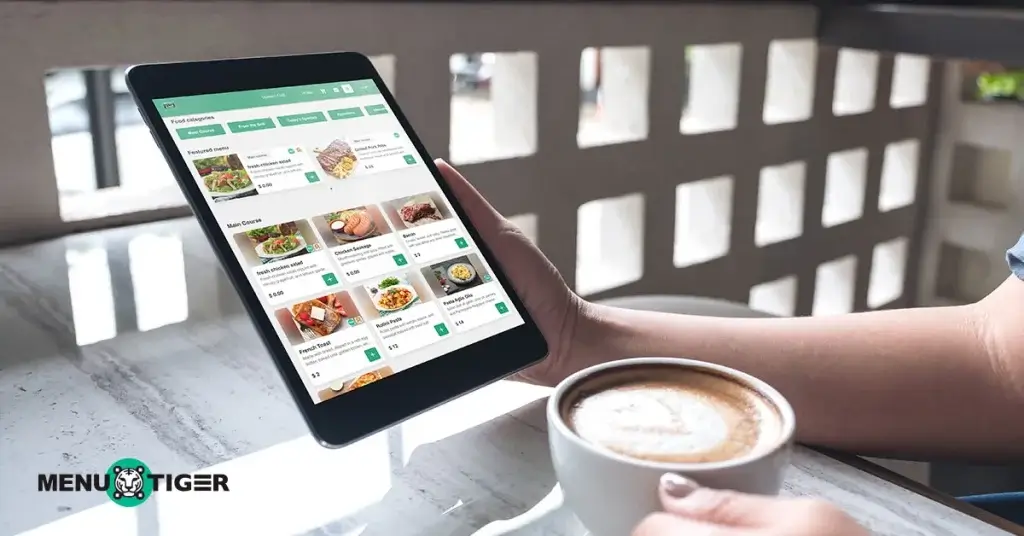
Choose a reservation system for restaurants that integrates with a digital menu ordering system so walk-in guests can browse, order and pay directly from their phones.
It speeds up table turnover, reduces pressure on staff, and helps ensure smoother service during peak hours.
5. Integrated waitlist + walk-in management
This matters especially, during busy hours; having a system that lets you manage both reservations and walk-ins from the same dashboard is a game-changer.
6. POS Integration and real-time table status
Use POS-integrated data to identify your top-spending guests, most popular dishes, and average check size by table type, which is useful for restaurant menu pricing and promotional planning.
7. Centralized guest communication hub
Choose a system that offers reserve with Google and social media integrations, as well as API access for custom website widgets.
Reasons why every restaurant needs a reservation system
You might be wondering, “Is this necessary?” Especially if you’re just starting out or running a small place, a restaurant reservation management system might seem like something only big or fancy restaurants need.
But the truth is, it can help any type of restaurant run more smoothly. Here are the reasons why having a reservation system is worth it:
1. Better guest experience
Let’s be real, waiting in line when you’re hungry is the worst, and nobody likes being turned away after being excited to visit and eat.
A reservation system lets guests book ahead, so they feel taken care of the moment they arrive. Less waiting = happier customers.
2. More time to prepare
This is a big advantage for start-up restaurants. Even if you do your best to make sure all the tools, ingredients, and staff are ready, there can still be last-minute issues or unexpected shortages.
Since you're still finding your rhythm, it’s not always easy to handle those surprises on the spot.
With reservations and best digital menu for restaurants that helps, you get extra time to double-check everything and prepare properly, so when your guests arrive, you’re confident everything is in place and ready to go.
3. Walk-ins and bookings can co-exist
In casual dining or during spontaneous meet-ups, walk-in guests are common, and they’re valuable. A reservation system doesn’t mean you have to turn them away. Walk-ins and reservations can complement each other
Reserved tables can be used for walk-ins, provided the reserved time hasn’t arrived yet, and of course, you can also welcome walk-in guests when seats are empty.
This ensures no table sits empty unnecessarily, and walk-ins feel welcome. It’s a smart way to maximize table usage without compromising service.
4. Capture guest information
Every reservation captures useful demographic data and other information, such as names, emails, phone numbers, dining history, allergies, and special requests.
Over time, this builds a database that lets you better understand your customers. You can tailor marketing messages, send email campaigns with an unsubscribe from email option, offer personalized promotions, or recognize VIP guests.
5. Handles large groups better
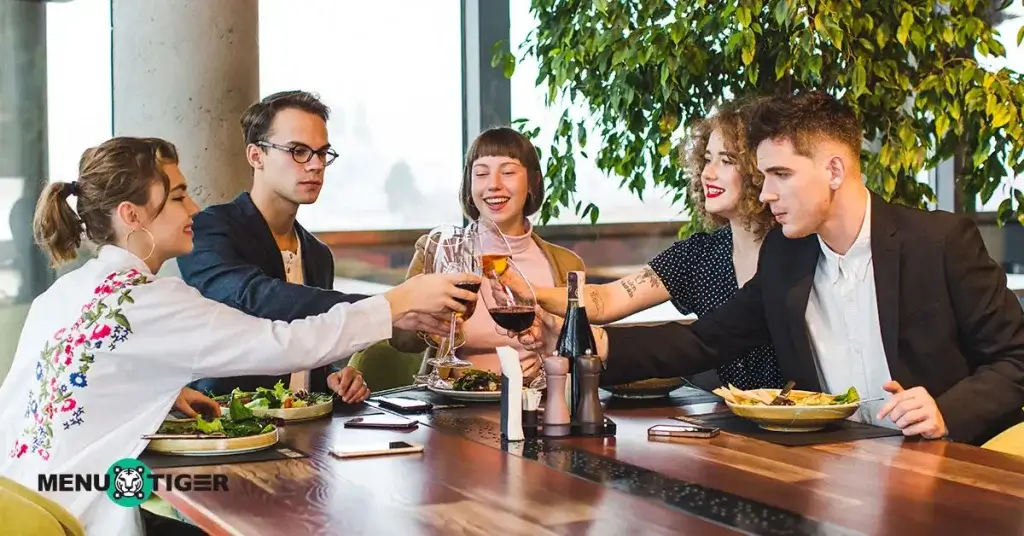
When someone brings a big group without warning, it can throw off the whole flow. But with a reservation, you can control the rush, you’ll have time to arrange the tables, prep extra food, and maybe even call in more help.
6. You don’t need to hire more staff too soon
When things are chaotic and unpredictable, it feels like you’re understaffed. But sometimes, all you need is better flow, not more people. A reservation system helps manage the rush so you can work with a leaner team and save on payroll.
7. Gives you a safety net on slow days
On quiet days, knowing you have at least a few reservations gives you peace of mind. You’re not just hoping someone walks in. It’s a steady, guaranteed income, even when foot traffic is low.
What characteristics of the restaurant market make it difficult for a reservation system to work?
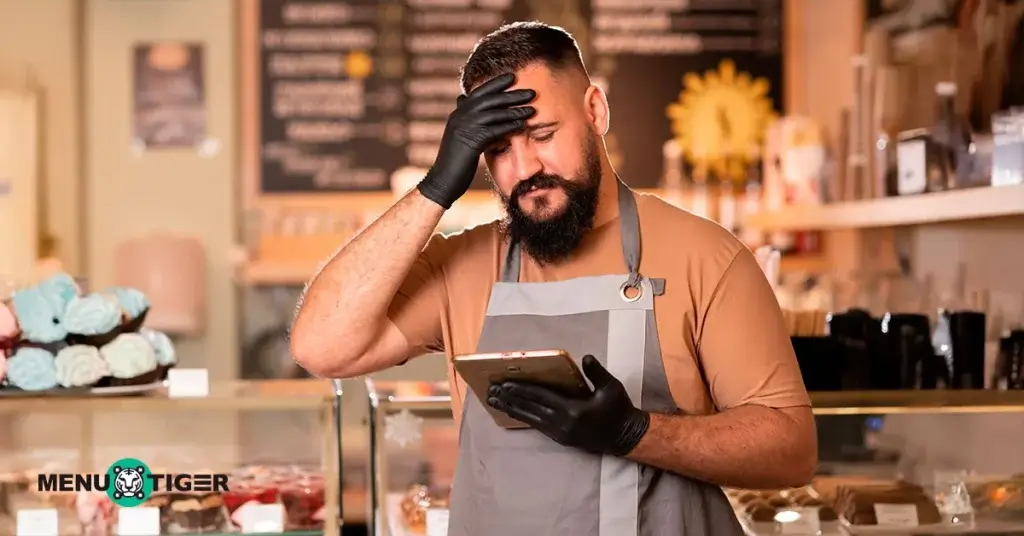
Even though reservation systems offer many benefits to any type of restaurant, certain aspects of the restaurant industry make them difficult to use effectively.
That’s why it's always smart to analyze the situation closely, since it usually comes down to how the restaurant runs and how people use or respond to the system.
Here are common challenges and some smart tips to help you make it work in any way:
1. No-shows and cancellations
Let’s face it: some people just don’t show up for their booking. No call, no cancel, nothing. And when that happens, the table sits there empty when it could’ve gone to someone else. That’s money lost, especially if you're fully booked and have to turn walk-ins away.
To avoid this, ask for a reservation fee or service fee for the preparation. It encourages guests to show up and helps prevent empty tables. Just make sure to understand the service fees at restaurant before implementing it
2. Market fragmentation and localization
When it comes to reservation systems, the market is very fragmented, meaning there are a ton of different platforms out there, each doing things a bit differently.
This becomes a challenge because the restaurant industry isn’t one-size-fits-all. Local dining habits, customer expectations, payment preferences, and even internet access vary widely depending on the region.
Choose a system with your location in mind, with local language, currency, and payment support. Some platforms are built specifically for regional needs.
3. Cost and affordability
Eat App is a highly rated reservation and table management platform with pricing from a free basic plan to a Pro plan at $239/month. It’s designed to scale easily, making it a great fit for restaurants of any size.
If the price feels a bit high right now, start with a tool that offers a free or freemium plan. Once your budget grows or the business picks up, you can always upgrade to a paid plan with more features.
4. Strong walk-in culture
You know how it goes: some people just don’t like planning. They’re out shopping, running errands, or suddenly craving pasta, and they just walk in hoping to get a table.
If you rely heavily on walk-ins, a strict reservation system can frustrate spontaneous diners.
Use a hybrid system to set aside a portion of your tables for reservations and keep the rest open for walk-ins. This way, you get the best of both worlds.
5. Variable demand patterns
Restaurant traffic isn’t consistent. It spikes during weekends, holidays, or certain hours. These unpredictable rushes make it hard to schedule reservations smoothly or turn tables efficiently, which can lead to overbooking or empty tables.
Use your reservation system or POS to track when your restaurant gets busy. Over time, you’ll notice patterns and can adjust your booking slots to match those busy times.
How to drive more online restaurant reservations through various platforms
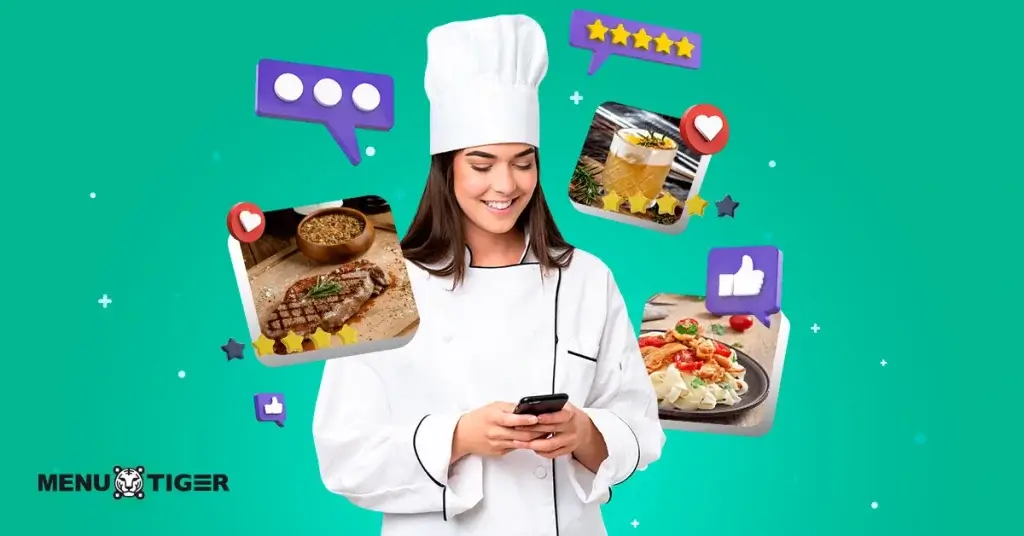
1. Optimize Google business profile
Most diners search for restaurants on Google Maps or Google Search. If your profile is complete and optimized, you're more likely to capture that traffic.
Start by claiming and verifying your Google Business Profile to appear in Search and Maps. Ensure your hours, location, contact info, and menu are accurate.
Encourage satisfied guests to leave 5-star reviews, and higher ratings boost your visibility and credibility on Google. Alternatively, you can seek help from a professional SEO agency that can optimize and manage your Google Business Profile for you.
2. Leverage third-party restaurant reservation system platforms
A third-party platform can expand your reach to new diners who might not find you otherwise.
These platforms have built-in traffic, filtering tools, and review systems that help you attract guests who are ready to book.
Being listed on multiple platforms also improves your visibility in search results and maps.
3. Use social media
Platforms like Instagram, Facebook, and TikTok are marketing campaign channels that can drive real bookings. On Instagram and Facebook, add a “Book Now” button to your profile by linking it to your reservation system
In your posts and stories, regularly remind followers to book, especially during weekends or for special events.
Create short, trend-driven TikTok videos that capture your restaurant’s vibe. Follow popular social media food trends and don’t forget to include booking info in your bio or captions.
4. Run paid ads to target high-intent diners
Online ads are a powerful way to fill tables, especially for peak nights or special events. Use Google Ads to target local searches like “best rooftop restaurant near me” or “romantic dinner reservation.”
Use geo-targeting and set ads to run a few days before the weekend, when people are planning where to dine out.
5. Partner with influencers
Word-of-mouth food advertisements have gone digital. Collaborating with local food influencers or lifestyle vloggers can quickly boost your visibility and credibility.
Invite them to dine and share their experience on platforms like Instagram, YouTube, TikTok, or even Substack newsletters. Their followers are often local, food-loving, and ready to try new spots.

Ready to turn your reservation system into a real growth tool?
A well-chosen restaurant reservation system isn’t just about filling tables. It’s a tool for smarter operations, stronger guest relationships, and more reliable revenue.
When paired with restaurant ordering software, it creates a seamless flow between front and back of house, helping you handle high-traffic periods without sacrificing service quality.
If your current setup only scratches the surface, now is the time to upgrade. With systems built to do more than just take names and times, you can take control of your floor, your data, and your guest experience.
FAQS
Eulla
Eulla joined MENU TIGER’s Content Team with a foundation in English teaching. She combines language expertise and creativity to produce engaging content that educates audiences and drives meaningful results.


